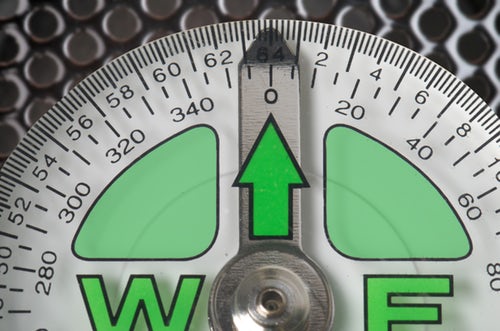What would you say the distinguishing factor is between your ability to lose weight and successfully keeping it off?
Genes? Family food heritage? Type of diet? Amount of exercise?
Well, according to the researchers at the National Weight Loss Registry (NWLR), the answer is…
Motivation.
Yup. It’s not genes or family food heritage or just exercise or the type of diet. It’s sheer motivation. Hard work.
And another important factor the researchers have learned?
That no 2 people lose weight the same way!
So what does that last finding have to do with you?
It means that in order to lose weight and successfully keep it off, you need to play around with ANY diet and exercise plan you follow, to see what works and what doesn’t.
Some of the things you can play with as variables:
- Times of day you eat.
- Amount of food you eat at one meal.
- The times of day you exercise.
- The types of exercise you engage in.
- What food you actually eat.
Other things to keep in mind while designing a health and fitness program:
- Understand yourself and where you personally struggle.
- Don’t be discouraged if you need to try several different plans or programs before hitting on what’s right for you.
- It may take about a month for a new habit or lifestyle to take hold. Keep at it and eventually the brain—and body—will respond.
- Trying to lose weight can seem overwhelming. Having an accountability partner or motivating fitness coach can help.
- Aiming for a health lifestyle change rather than just a weight scale number will provide you the most success.
- Slow and steady, rather than fast and dangerous, wins the prize!
- Write down all meals and food eaten throughout your day.
- You may find eating more frequent, smaller meals is best.
- When selecting an exercise program, choose to do something you love. You’ll be more likely to stick with it.
- Don’t allow yourself to be pigeonholed into a specific diet.
- Be determined to persevere and push through the tough days.
- If at first you don’t succeed, then try, try again!
- Remember, as you age, you’ll likely need to tweak your diet and exercise program again as your flexibility, metabolism and muscle mass change.
- And in some cases, mental health must be addressed and successfully managed before you can find dieting success.
Some specific weight loss success tips:
- Pay attention to your portion sizes. Most of us eat way too many monster meals, especially at restaurants or all-you-can-eat buffets.
- If necessary, purchase smaller plates and fill them up. It will give you the impression you’re eating more.
- Sit down to eat and slow down to eat. It takes a while (about 15-20 minutes) for your brain to get the notice that you’re full. Scarfing food usually means too much food intake. And then that stuffed feeling.
- Don’t allow yourself to eat on the run, in the car, or while standing in the kitchen.
- Keep a food journal. In it keep track of everything you eat and how you feel after eating it, even into the next day. If you do that for 30 days, you’ll start getting an idea about what foods may be causing you problems, from allergies to bloating to indigestion and sluggishness.
- Also keep track of your food-eating triggers, like stress, lack of sleep, late night eating, etc.
Moving forward—
Losing weight can, and does, change your life!
If you’re already on a diet plan and haven’t seen much success with it in, say, a month, try tweaking it a bit. Change the food portions; change the time of day you eat the prescribed meals. Exercise more; sit less. And make sure you’re getting enough replenishing water. Believe it or not, many times we think we’re hungry when it’s really our thirst mechanism kicking in. First take a drink and then wait to see if the hunger pangs continue.
Understanding and taking into account all of these factors is known as the “whole body approach” to health and fitness. It’s not a one-size-fits-all undertaking. You’re unique, and you need a unique—or tweaked—health and fitness plan!
NEXT WEEK, we’ll talk a little about the genetic factor, and the newest research on the importance of healthy gut bacteria. Can anyone say “probiotics?”
Until then, don’t throw in the towel. Keep at it until you find your sweet spot. Your health will appreciate you for it!
Blessings,
Andrea
“Certainly there was an Eden….We all long for it, and we are constantly glimpsing it.” —J.R.R. Tolkien


